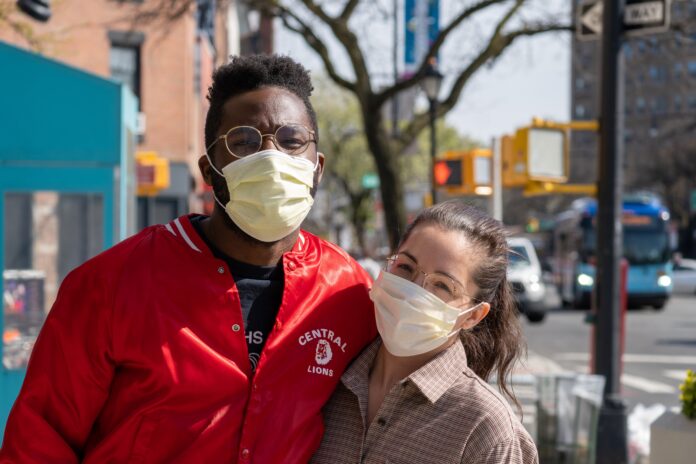RSV, the flu and COVID-19 are all respiratory syncytial virus (RSV) infections. They’re all highly contagious and can cause serious health complications for adults and children. So what’s the difference? In this blog post, we will explore the different aspects of RSV, flu and COVID-19 and explain their respective effects. We will also offer tips on how to protect yourself from these viruses and keep your family healthy during the winter months.
Can RSV and flu be mistaken for COVID-19?
RSV (respiratory syncytial virus) is a respiratory virus that is common in infants, young children and the elderly. It can cause a mild to severe infection of the lungs. The flu is a more serious type of respiratory infection caused by viruses belonging to the family of viruses that includes the common cold and SARS (severe acute respiratory syndrome). The flu can cause fever, muscle aches, headache, coughing and pneumonia. COVID-19 is a new coronavirus that was first identified in 2019. It is very similar to RSV and the flu, but it has been linked with a higher risk for severe illness, including death. There is no vaccine available for either RSV or COVID-19 yet, so it is important to get vaccinated against both if you are at risk.
Symptoms unique to RSV
RSV is a respiratory virus that can cause chronic cough, wheezing, and pneumonia. It’s more common in young children and the elderly, but it can also be spread through contact with saliva or mucus from someone with RSV. RSV is closely related to the flu, but there are some key differences: RSV usually causes less fever and cough than the flu, and it typically lasts for about two weeks rather than three.
Another respiratory virus called COVID (chronic Obstructive Pulmonary Disease) is closely related to RSV and can also cause chronic lung problems. People with COVID often have difficulty breathing due to blocked airways. Like RSV, COVID is most common in young children and the elderly but can also be spread through contact with saliva or mucus.
Symptoms unique to flu
RSV is a respiratory syncytial virus that typically causes colds in young children and the elderly. RSV can also lead to severe pneumonia in children, adults, and the elderly.
The flu is a viral illness that can cause a range of symptoms including fever, body aches, headache, sore throat, cough, diarrhea and vomiting. The flu is most dangerous to pregnant women and their newborns.
COVID- is a more rare type of respiratory syncytial virus (RSV) that is associated with severe pneumonia in young children and the elderly.
Symptoms unique to COVID-19
RSV symptoms are similar to the flu, but there are some key differences. For example, RSV can cause bronchitis, a sinus infection and pneumonia. COVID-19 symptoms, on the other hand, are very specific and often unique to people who develop it. Some of the most common symptoms include fever, body aches and a headache. There is no vaccine available for COVID-19 yet, so prevention is key. Keeping your immune system strong by getting vaccinated against both RSV and the flu each year is one way to protect yourself.
Other tools to help diagnose respiratory viruses
There are several other tools that can be used to help diagnose respiratory viruses, including a chest X-ray and stool testing. A chest X-ray can help identify if there is any obstruction in the airways or if the person has pneumonia. Stool testing can help determine if the person has a virus or a bacterial infection.
Home testing now and in the future
There is a lot of confusion about the differences between RSV, the flu and COVID- which is why it’s important to have regular home testing, whether you’re young or old.
RSV (respiratory syncytial virus) is a common childhood respiratory infection that can lead to bronchitis, wheezing and pneumonia. The flu is an acute viral illness that can cause fever, body aches, headache and sore throat. COVID- stands for coronavirus disease severe acute respiratory syndrome and is a more severe form of the flu that can be fatal if not treated quickly.
Home testing for RSV, the flu and COVID- is essential because symptoms can be mild and go unnoticed if left untreated. Children are most susceptible to these viruses and should be monitored closely by their doctor since they are more likely to spread the virus. If you experience any signs or symptoms of a respiratory infection such as fever, coughing or shortness of breath, it’s important to talk to your doctor or nurse about getting checked out.
Can my child have a co-infection with more than one virus?
There can be many different viruses that a child can have at the same time. The most common viruses are the rhinovirus, the respiratory syncytial virus (RSV), and coronavirus. These are all viruses that can cause illnesses in children, but there are also some other viruses that can cause illnesses in children too. Some of these other viruses include adenovirus, which is a virus that causes colds, andpneumonia-causing bacteria (PPC).
Each virus has its own set of symptoms, which means that one child may experience only a mild illness while another may experience a more serious illness as a result of having one or more of these viruses. It is important to remember that not all children who have one or more of these viruses will get sick, and not all children who do get sick will be hospitalized. However, it is still important for parents to take their children to see their doctor if they develop any concerning symptoms related to any of these viruses.
How to prevent respiratory illnesses
Respiratory illnesses are a big problem in the wintertime. When it’s cold outside, people are more likely to catch respiratory illnesses like the flu and RSV.
RSV is a respiratory virus that most often affects young children and the elderly. It’s usually a mild illness, but can cause wheezing, coughing, fever and chest congestion. The flu is a more serious respiratory illness that can cause fever, cough, body aches and headache. It can be deadly in some cases. COVID- is another name for RSV infection and it’s very common in children under 5 years old. It causes less severe symptoms than RSV but can still lead to pneumonia (a serious lung infection). prevention tips for respiratory illnesses include: getting vaccinated against the flu and RSV; using a humidifier in dry rooms; washing your hands regularly; avoiding close contact with people who are sick; and keeping your home clean.
When to call their healthcare provider
Phone doctor Australia (For online doctor help)
There’s a lot of confusion out there about what these three diseases are and what they mean for you. In this article, we’re going to clear up the difference between RSV, the flu and COVID- so you can know when to call your healthcare provider.
RSV (respiratory syncytial virus) is a respiratory illness that is most commonly spread through contact with respiratory secretions, such as saliva or mucus. It is most common in young children, but can occur at any age. Symptoms include fever, cough, difficulty breathing, and chest discomfort. Most people recover without treatment, but in some cases RSV can lead to serious complications such as pneumonia. If you think you may have RSV, it’s important to get checked out by your healthcare provider.
The flu is an infection caused by viruses A (H1N1) or B (H3N2). Seasonal Flu usually starts to show up around October and peaks around December-January. The flu causes symptoms that vary from person to person but generally includes: fever, body aches and pains, cough, sore throat and headache. Unfortunately influenza can cause severe pneumonia which can be life-threatening if not treated quickly. If you think you may have the flu, it’s important to get checked out by your healthcare provider as soon as possible.
COVID- (chronic obstructive pulmonary disease) is a lung disorder that makes it difficult for the lungs to.



